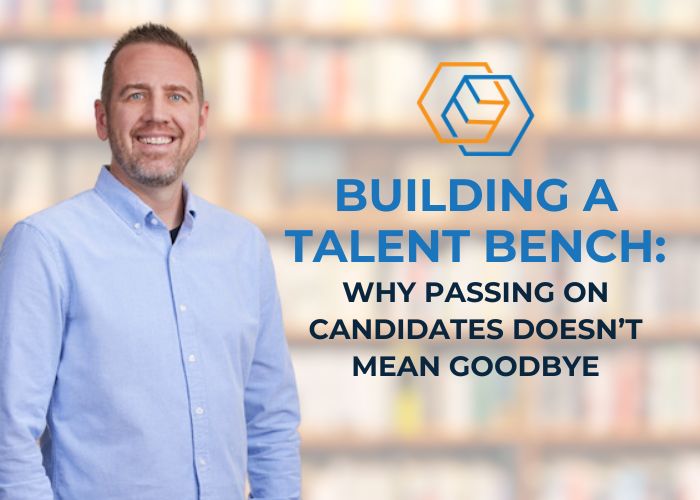The Ultimate Guide to Avoid Hiring the Worst Candidates

Hiring the right candidates is crucial for the success of any organization. However, the process can be daunting and time consuming. One misstep can lead to interviews with the worst candidates.
To avoid this, it’s essential to have a systematic approach in place. In this guide, we’ll provide you with a comprehensive step-by-step plan to avoid hiring the worst candidates and ensure you bring on board the best talent for your team.
#1 Have a Clear Plan
Before you start the hiring process, it’s vital to have a clear plan in place. Define what you’re looking for in a candidate, what skills and attributes are essential for the role, and what outcomes you expect from the hiring process. Without a plan, you risk attracting the worst candidates who aren’t the right fit for your organization.
Before posting your job ad, ask yourself:
- Who will see your job ads?
- What “pond” do you need to fish in?
- What happens when someone comes to the interview and is the wrong fit?
By going into hiring with a clear plan, you’ll attract the candidates that are the right Core Fit for your company.
#2 Advertise Strategically
When advertising job openings, make sure your job title accurately reflects the role and what job seekers are searching for. While fun titles may seem like the right way to attract a candidate that matches your culture, you have to be careful that it’s still searchable.
For example, “Chief Happiness Officer” (yes, this is a real job ad title), may sound warm and fuzzy, but you’re probably not going to capture most of the HR people looking to specialize in retention.
Once you’ve found the right balance of searchability and creativity, it’s time to focus on the rest of the job ad. Craft job descriptions that not only outline the responsibilities but also highlight the qualities of the manager they’ll be working under. Remember, people leave managers, not jobs. Weed out the worst candidates by being clear about expectations and company culture.
#3 Prepare for the Interview
Before conducting interviews, know what questions you’ll ask to assess candidates thoroughly. It’s important that your questions are consistent among candidates, that way you’re comparing similar answers when deciding which candidate to hire.
Be prepared to break through candidates’ reservations and concerns, as well as explore aspects of the conversation that may not be explicitly said. For example, if a candidate asks you about the work hours, then withdraws after you say it’s a strict 7 am start time, you have to be aware enough of their subtle reaction to ask follow up questions to see what the issue is. Maybe their child’s daycare center doesn’t open until 7 am and is 10 minutes away from the worksite. If they’re in their final months of daycare before elementary school starts, this may be something you’re willing to flex on if it means hiring the right candidate.
Invest time in building a rapport with candidates to gauge whether they could be a good fit for your organization. You need to spend enough time with each candidate to give them an opportunity to realize they could fit in at your company.
#4 Conduct Interviews
Start with a brief phone screen to determine if the candidate aligns with your company’s culture and possesses the skills required for the role. The main question you should ask yourself is: do I want to spend more time with this person?
Limit the phone screen to 10 minutes or less. Once you’ve ended the call, ask yourself:
- Are they a culture fit?
- Would they feel like they belong here?
- Are they capable of doing the work required for this role?
The phone screening isn’t the time to dig into the details. It’s just a quick check in to make sure they’re someone you want to learn more about. Focus on assessing whether they would belong in your organization and if they have the capability to perform the required tasks effectively.
Once they pass the phone screening, it’s time to schedule their in office interview. In order to avoid the worst candidates, expect this interview to take significantly longer. By setting expectations, learning about the candidate as an individual, and engaging in an open and honest conversation, you and your candidates will benefit immensely.
Here are some tips for the interview:
- Spend time getting to know the candidate
- Talk about the good and the bad of the job
- Share who they’ll be working with and how they’ll be managed
- Ask them why they’re passionate about the position
- Spend less time focusing on the details of the job
Remember, candidates don’t always tell the truth, so spend more time focusing on if they’re a good culture fit for the team and less time quizzing them on job-specific details.
#5 Evaluate Culture Fit
In order to avoid the worst candidates, always be watching for culture fit. Consider whether the candidate’s values and personality align with your company culture. Look for indicators of alignment and a sense of belonging within the organization. Assess whether they would thrive in your company’s environment and contribute positively to the team dynamics.
During the interview, you can ask questions about what type of team environment they’ve thrived in or what type of boss has been difficult to work for. Ask open ended questions and listen carefully to their responses. See how their answers align with your company and team.
You could interview an extremely skilled and experienced person who isn’t a good fit for your team. Do NOT make that hire. You can always train someone on the skills they’re lacking. Changing someone’s personality to align with your team is much more difficult.
#6 Assess Position Fit
Before making an offer, be sure the candidate is the right position fit. Ask yourself:
- Are they the right person from a skills perspective?
- Will they be able to perform the job duties that are required?
- Are they able to take care of customers like you need them to?
- Will they be able to deliver skills/services like you need them to?
- Are they able to perform like they say they can?
Evaluate whether or not the candidate has what it takes to excel in the role.
Keep in mind, it’s easier to teach someone technical skills than it is to change the way they interact with people. If someone isn’t familiar with one aspect of the job, but they would be a great culture fit and are a quick learner, they might be worth taking a chance on hiring.
#7 Present a Solid Offer
When extending an offer to a candidate, ensure that all parties are clear about the terms and expectations. A transparent offer process fosters trust and sets the stage for a positive working relationship. The best offer meetings are the ones where everyone knows what to expect if the candidate accepts the job offer.
#8 Move Quickly
When you receive a job application, you need to move fast. Ideally, you’ll respond to every application within minutes – even on the weekend. This allows you to connect with the candidate while your job ad is fresh in their mind. It also makes it easier for you to schedule interviews quickly.
Keep the interview process moving quickly to show candidates you’re serious. Schedule the in person interview while you’re still on the phone screening call. Tell them what to expect for next steps when the in person interview wraps up.
Speed and attitude will show your candidate that you’re excited to talk with them and serious about moving forward with hiring.
Treat candidates with the same level of professionalism and urgency as you would with potential clients or customers.
#9 Plan for Onboarding
Once you’ve selected the right candidate, ensure a smooth transition by providing comprehensive onboarding support. Engage your new hire in your company culture, facilitate introductions to team members, and equip them with the resources they need to succeed in their new role.
Onboarding goes far beyond your new hire’s first 90 days. Watch retention improve as you focus on strategies to continue to build morale and engagement.
Avoid Hiring the Worst Candidates
By following this step-by-step guide, you can streamline your hiring process and avoid the pitfalls of hiring the wrong candidates.
With a clear plan, strategic advertising, thorough preparation, and efficient execution, you’ll be well-equipped to attract and retain top talent that will contribute to the success of your organization.
If you’re ready to implement a proven process that actually makes hiring easier, check out the Core Fit Hiring System. In as little as 5-15 minutes a day, you can become a hiring pro. Our easy-to-navigate video training is broken up into short bites that let you get straight to what you need, when you need it.



